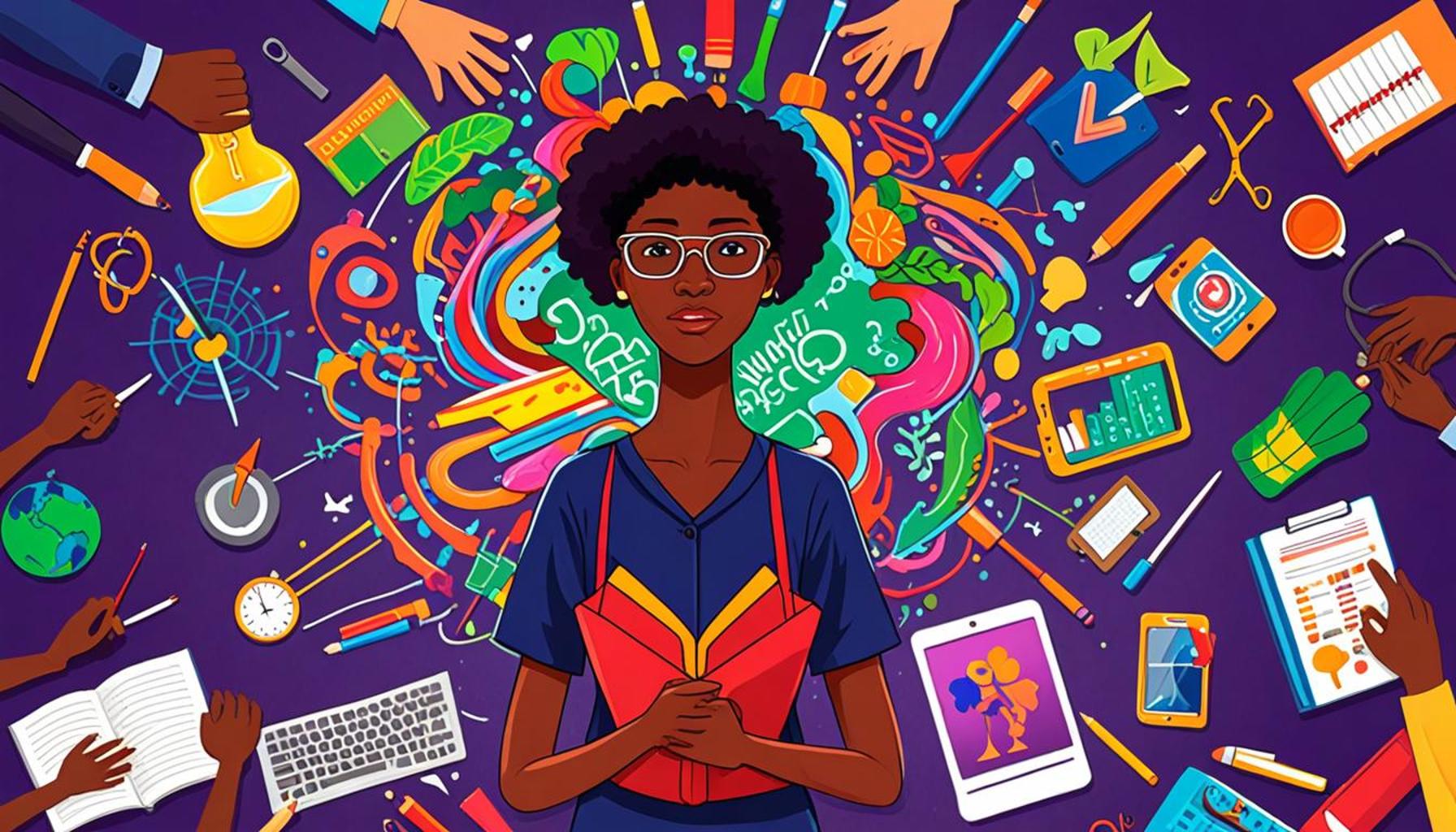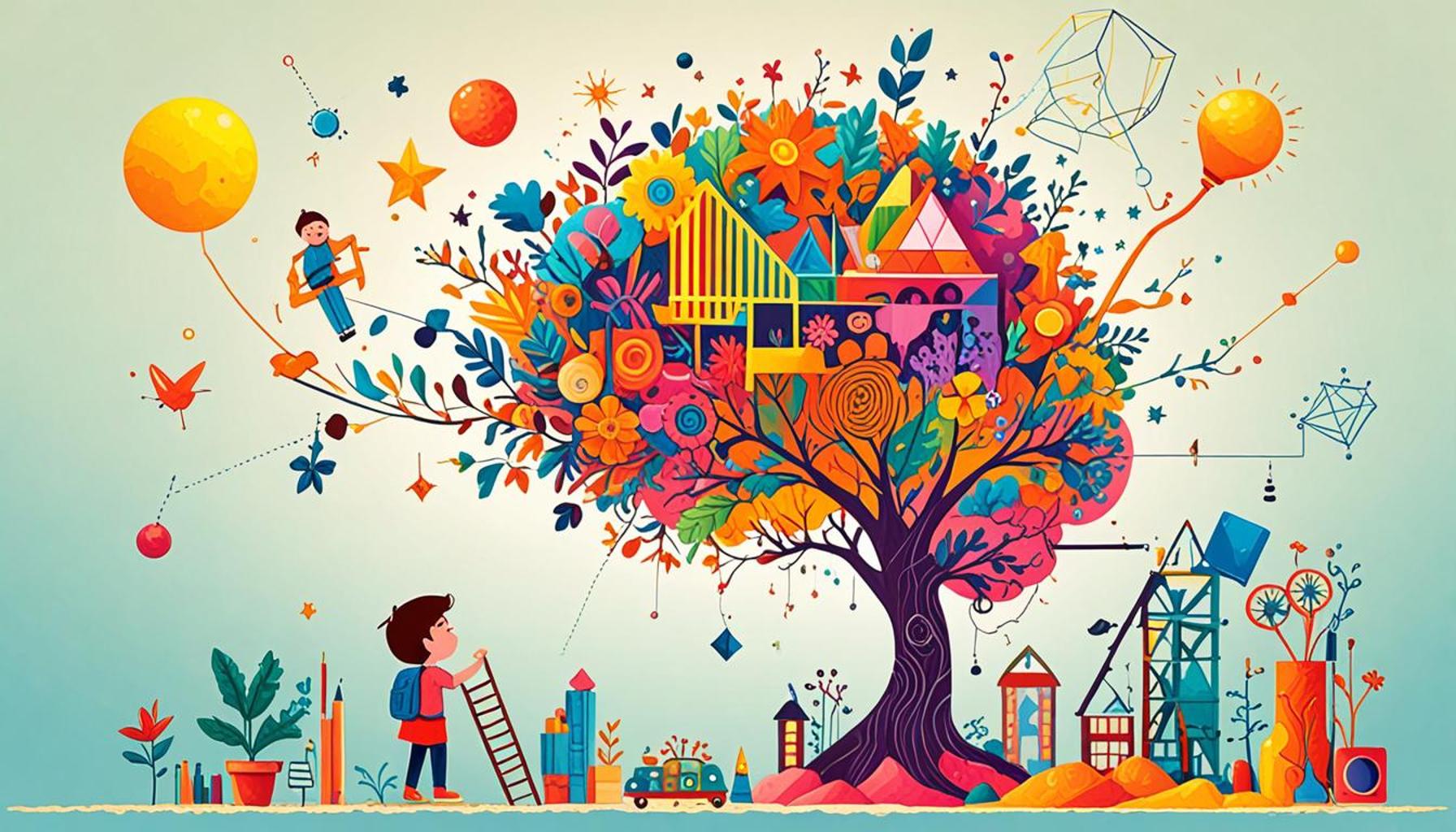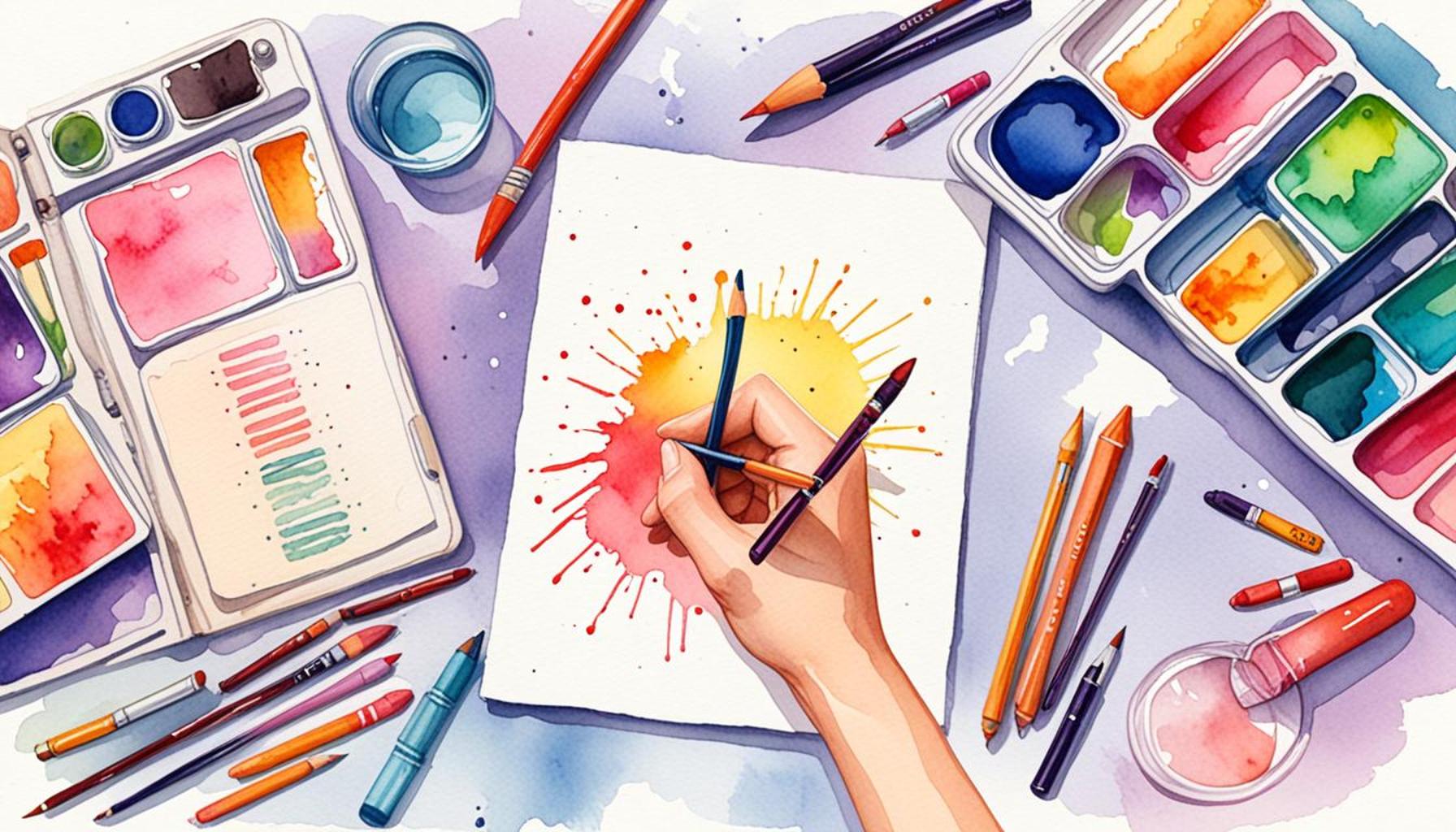Collaborative Learning Techniques to Foster a Growth Mindset in Nigerian Students

Understanding Collaborative Learning in Nigeria
The educational system in Nigeria is undergoing substantial transformation as it seeks to address the diverse needs of its learners. At the heart of this transformation is collaborative learning, an educational approach that emphasizes teamwork and shared responsibility in the learning process. This method plays a pivotal role in nurturing a growth mindset among students, enabling them to view challenges as opportunities for development. The essence of collaborative learning lies in its ability to create a cooperative atmosphere where students can support each other in their educational journey.
Research in educational psychology has consistently shown that collaborative learning techniques can dramatically enhance both academic achievement and personal growth among students. For instance, studies have indicated that engaging students in group tasks can improve their retention of information, as they actively discuss and work through material together. Here are some significant advantages to consider:
- Enhanced Communication Skills: Collaborative learning allows students to articulate their thoughts while also listening to and respecting differing opinions. For example, during a group project on Nigerian history, students may engage in passionate debates about the significance of events, thereby honing their verbal and written communication abilities.
- Improved Problem-Solving Abilities: The brainstorming process that occurs in collaborative settings frequently leads to innovative ideas. In a math class, students solving complex problems together can leverage each other’s strengths, resulting in creative solutions that may not have emerged through individual study.
- Social Interaction: Collaborative learning fosters meaningful relationships among peers. By working together on assignments or challenges, students develop a sense of camaraderie, which can lead to increased motivation and a stronger commitment to their studies.
Implementing effective collaborative strategies is essential as Nigerian educators strive to enhance student engagement and learning outcomes. Techniques such as group projects, where students tackle a topic and present findings collectively, peer teaching, where more knowledgeable students assist their classmates, and cooperative games, designed to build teamwork and strategic thinking, are just a few methods that empower students. These approaches encourage learners not only to embrace challenges but also to persist even when faced with setbacks.
Furthermore, as these techniques are explored and integrated into the curriculum, they ensure that students are not merely passive recipients of information. Instead, they become active participants in their learning process. This involvement is critical as the demand for skilled professionals grows within Nigeria’s dynamic economy, necessitating graduates who are adaptable, innovative, and capable of thinking critically.
In conclusion, the integration of collaborative learning methodologies in Nigerian education not only promotes academic success but also cultivates resilient, lifelong learners ready to tackle the complexities of the modern world. By embracing these collaborative techniques, educators can lay the groundwork for a more engaged and competent future generation, fully equipped to meet the challenges that lie ahead.

LEARN MORE: This related article may interest you
Key Collaborative Learning Techniques in Nigerian Classrooms
To effectively nurture a growth mindset among Nigerian students, it is crucial to apply innovative collaborative learning techniques that encourage active participation and resilience. These techniques, when applied thoughtfully, can reshape the educational landscape and foster an environment where students not only challenge themselves but also support one another in their academic quests. Here are some proven methods that educators can implement in Nigerian schools:
- Think-Pair-Share: This technique involves posing a question to the class, allowing individual thinking time, and then facilitating discussions in pairs before sharing insights with the larger group. For instance, in a science class discussing environmental conservation, students can first contemplate their thoughts individually, discuss them with their partner, and finally share with the class. This method promotes critical thinking while enhancing communication skills.
- Collaborative Group Projects: Group projects are effective in promoting teamwork and shared responsibility. For example, students studying Nigerian cultural heritage can work in groups to research, design, and present on different ethnic groups. This task not only deepens their understanding of the subject but also builds their ability to work as a team, fostering accountability and trust.
- Peer Teaching: In this approach, students take turns teaching one another. More knowledgeable students can help their peers grasp difficult concepts, such as mathematical formulas or literature analysis. This not only reinforces the teacher’s instruction but also empowers students, allowing them to take ownership of their learning while reinforcing their understanding through teaching.
- Role-Playing: This technique immerses students in practical scenarios, encouraging them to adopt different perspectives. In a history lesson on Nigeria’s independence, students can participate in role-playing historical figures to understand diverse viewpoints and the socio-political climate of the era. Such immersive experiences can help develop empathy and analytical thinking.
- Cooperative Games: Engaging students in games designed to enhance interpersonal skills and strategic thinking can be both educational and enjoyable. Activities like relay races that require teamwork and strategy can demonstrate the value of collaboration, thus reinforcing social skills and building a sense of community.
These collaborative learning techniques not only help students academically but also build their social-emotional skills. By incorporating them into the classroom, educators can help students understand that learning is a journey characterized by challenges and growth, rather than a destination. In addition, the emphasis on collaboration encourages students to celebrate each other’s successes, fostering a healthy competitive spirit.
As these techniques gain traction, the potential for a cultural shift within Nigerian educational systems also becomes apparent. By prioritizing collaborative learning approaches, educators can lay a strong foundation for a more adaptable and innovative workforce, ready to meet the demands of a rapidly evolving global landscape. Students equipped with a robust growth mindset are not only prepared to face academic challenges but are also more likely to contribute positively to their communities and the nation at large.
Collaborative Learning Techniques and Their Impact
As education systems evolve, collaborative learning techniques are emerging as pivotal methods for nurturing a growth mindset in Nigerian students. By engaging students in cooperative tasks, these techniques promote critical thinking and enhance problem-solving skills, ensuring that learners are not just passive recipients of knowledge but active participants in their education. This level of engagement is crucial in a diverse educational landscape like Nigeria, where varying abilities and backgrounds can influence learning outcomes.
Peer Learning and its Advantages
One notable aspect of collaborative learning is peer learning, which enables students to learn from one another. This process fosters communication skills and instills a sense of responsibility among peers, as they work together to achieve common goals. For instance, students can form study groups to tackle complex subjects such as mathematics or science, where they share different perspectives, thereby enhancing their understanding significantly.
Project-Based Learning
Another effective collaborative technique is project-based learning, which allows students to engage with real-world problems through teamwork. This form of learning encourages creativity, innovation, and practical application of knowledge. For example, a community project that addresses local environmental issues can motivate students to collaborate, apply their learning, and develop solutions that benefit their community. Such projects not only enrich the learning experience but also instill a sense of social responsibility, vital for the overall development of students as future leaders.
Technology-Enhanced Learning
Integrating technology in collaborative learning further enhances its effectiveness. Utilizing online platforms for group projects or discussions can bridge geographical gaps and enable students from different regions of Nigeria to collaborate. This exposure helps to cultivate an inclusive learning environment, essential for a nation with diverse cultural and educational backgrounds. Furthermore, the use of technology can also help in overcoming traditional educational barriers, allowing for a more extensive reach and a broader audience for educational resources.
The Role of Educators
Educators play a crucial role in implementing these collaborative learning techniques. By fostering a supportive environment where students feel safe to express their viewpoints, teachers can help build resilience and a growth mindset. Facilitators must also train to design group activities that pique students’ interests while aligning with educational objectives. This approach not only makes learning enjoyable but also encourages students to view challenges as opportunities for growth and improvement.
| Advantage | Description |
|---|---|
| Enhanced Critical Thinking | Collaborative techniques promote active learning, encouraging students to think critically. |
| Improved Communication Skills | Working in teams helps students articulate their ideas clearly. |
| Increased Motivation | Collaborative efforts create a sense of belonging and accountability among students. |
These collaborative learning techniques not only foster a growth mindset but also prepare Nigerian students to thrive in a complex global environment. As education continues to adapt, the emphasis on teamwork and collaboration will undoubtedly create more resilient, problem-solving individuals ready to face tomorrow’s challenges.
YOU MAY ALSO LIKE: Read read another article
Engaging Families and Communities in Collaborative Learning
To further enhance the impact of collaborative learning techniques in fostering a growth mindset among Nigerian students, it is essential to engage not only the school environment but also families and communities. Involving parents and local stakeholders can create a robust support network that encourages students to embrace challenges and view failures as opportunities for growth.
One effective approach is organizing family learning days, where students invite their parents or guardians to participate in collaborative activities. For example, schools might host a science fair where students work in teams to create projects that demonstrate scientific principles. Family members can contribute by assisting with research, providing materials, or simply showing support. This involvement reinforces the idea that learning is a lifelong process supported by the community, and it allows families to witness firsthand the collaborative activities taking place in the classroom.
Building Connections with Local Organizations
Partnering with local organizations can also enhance collaborative learning experiences. For instance, schools can collaborate with NGOs that focus on education and youth development to organize workshops that promote teamwork and problem-solving skills. Such partnerships can lead to the introduction of community service projects where students can apply their learning in real-world contexts. For example, students might engage in environmental conservation efforts, helping to clean up local parks or plant trees, while working together to strategize and implement their plans. These hands-on experiences reinforce the importance of collaboration and the value of contributing to society.
Utilizing Technology for Collaborative Learning
Moreover, the integration of technology can significantly enhance the effectiveness of collaborative learning techniques. In today’s digital age, utilizing platforms such as Google Classroom, Microsoft Teams, or social media for project work can facilitate group interactions beyond traditional classroom settings. For instance, students from different schools across Nigeria can collaborate on national projects, sharing ideas and resources virtually. This not only fosters a sense of unity and shared purpose but also develops their digital literacy and prepares them for future job markets characterized by remote interactions and global collaboration.
Through these approaches, collaborative learning transcends the classroom, creating a culture where students are encouraged to take calculated risks, reflect on their experiences, and learn from one another. Parents, local organizations, and technology play crucial roles in creating a supportive ecosystem that nurtures resilience and adaptability.
Assessment as a Collaborative Process
Additionally, incorporating peer assessments into the learning process can shift the focus from grades to growth. By allowing students to assess each other’s work, they learn to give constructive feedback and recognize diverse perspectives. This technique helps them develop critical evaluation skills and understand that success is not solely defined by a grade but by continuous improvement and learning from mistakes. Assessment should celebrate effort and persistence rather than merely the final product, which aligns with the principles of a growth mindset.
In conclusion, by fostering collaborations amongst families, local organizations, and leveraging technology, Nigerian educators can create a dynamic learning environment that cultivates a growth mindset. Through these efforts, students will not only become resilient learners but also pillars of their communities, ready to tackle challenges with creativity and cooperation.
LEARN MORE: This related article may interest you
Conclusion: Enhancing Growth Mindset through Collaborative Learning
In the landscape of education, collaborative learning techniques serve as a powerful catalyst for fostering a growth mindset among Nigerian students. By engaging families, local communities, and incorporating technology, educators can build a network of support that extends beyond the boundaries of the classroom. This holistic approach not only ignites a passion for learning but also instills values such as teamwork, resilience, and adaptability, essential for navigating today’s challenges.
The importance of community involvement cannot be overstated; initiatives that bring families into educational activities encourage a supportive environment where students feel empowered to take risks and learn from setbacks. When aligned with community organizations, schools can create opportunities that connect academic knowledge to real-world applications, enhancing both social responsibility and collaborative skills. Furthermore, leveraging technology opens a wide array of possibilities for students to connect, engage, and grow together, regardless of geographical barriers.
Incorporating peer assessments in educational practices further shifts the focus from mere grades to the growth process itself. Students learn valuable feedback skills and appreciate diverse perspectives, transforming how they view challenges and achievements. In a system that celebrates effort, persistence, and innovation, students not only thrive academically but also transform into proactive members of society.
As Nigeria continues to evolve in its educational strategies, embracing collaborative learning techniques presents an opportunity to cultivate a generation of resilient thinkers. By nurturing this growth mindset now, we are equipping students to face future challenges with creativity, cooperation, and confidence, ultimately enriching both the individual and societal landscape.



